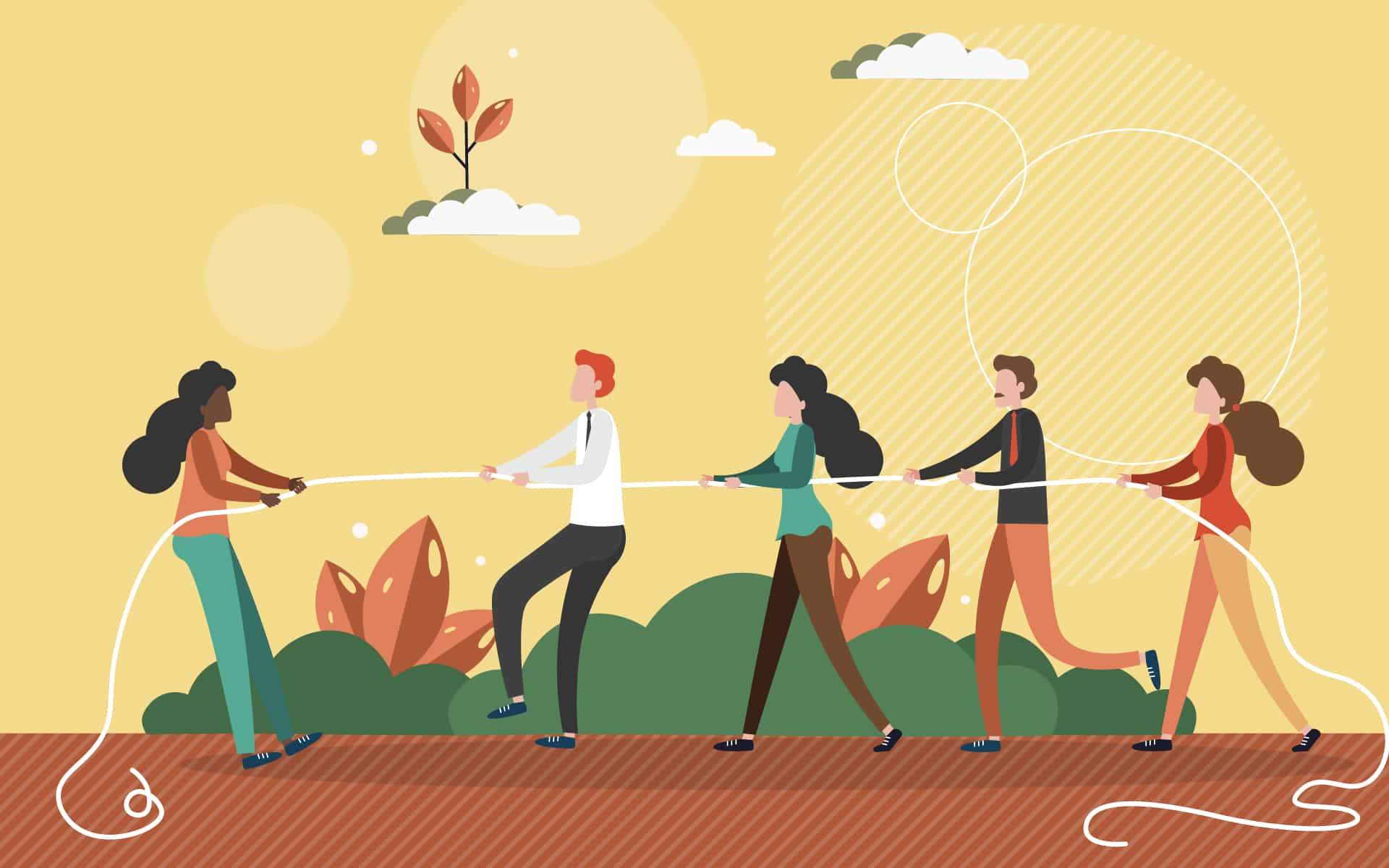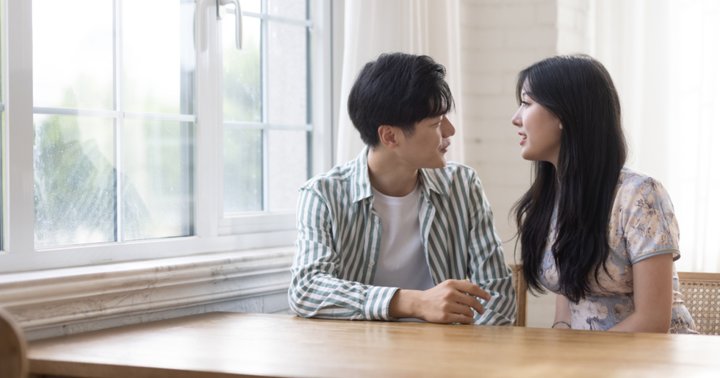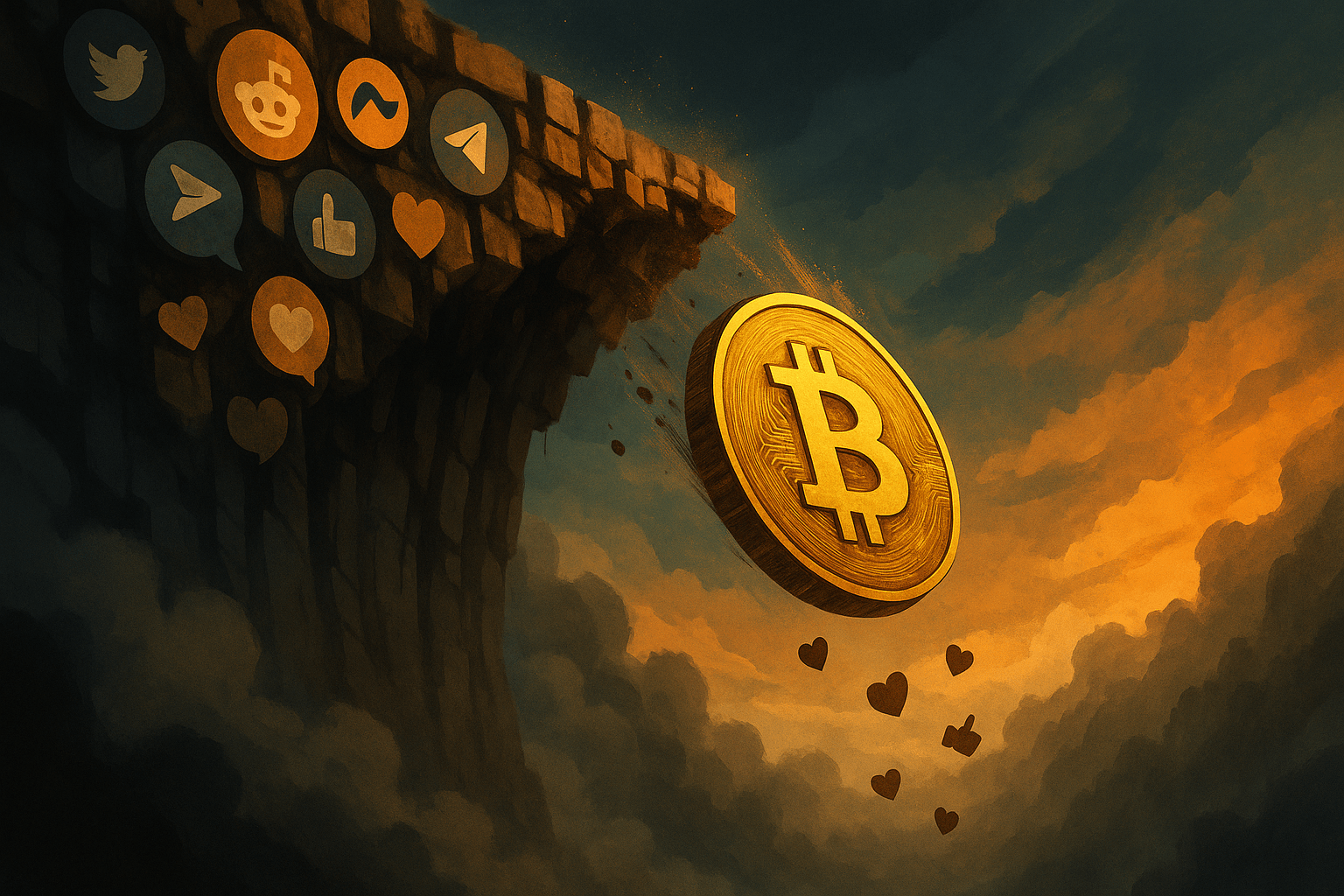Why Aggressions Are Not Micro and How to Avoid Them
“Microaggressions” can have a massive impact on those on the receiving end. Learning how to interrupt them from a lens of openness and curiosity for ourselves and others can help us work toward more compassionate schools, workplaces, and communities....

Welcome back to our Racial Healing Series by Tovi Scruggs-Hussein. In this series, we’re navigating uncomfortable truths about race, racism, and the othering that exists in our ethnocentric mainstream culture. For those who’ve just joined us, feel free to get caught up and take a look at the first four articles in this series here or dive right in with us.
Before we focus on the topic for our final article in this series, it’s important to take stock of the topics we have been working with so far. Bias, White fragility, and the role shame plays in our ability to process race and racism in our daily lives have made for some deep reflection and an opportunity to learn things that are new to many of us. In this article, we’ll explore microaggressions, another rich topic, critically important to developing a sense of cultural humility and belonging.
As we begin to round the corner, moving toward more awareness and understanding, please give yourself a moment to recognize and celebrate any subtle evolution you may experience. You’ve begun to courageously dedicate yourself to this learning and it makes a difference. Let yourself actually welcome whatever discomfort still arises as a sign that the work is working. It becomes like muscle soreness after a hard workout, a subtle signal of the evolution of your improving stamina and resilience. In this instance, the signs of progress may show up in our own thinking and ways-of-being.
What Are Microaggressions?
Psychiatrist and researcher Dr. Chester Pierce coined the term “microaggressions” circa 1970. Nearly four decades later, Dr. Derald Wing Sue and his colleagues dove deeper and crafted this definition: “Racial microaggressions are brief and commonplace daily verbal, behavioral, and environmental indignities, whether intentional or unintentional, that communicate hostile, derogatory, or negative racial slights and insults to the target person or group.”
As our racial literacy has evolved, Dr. Ibram X. Kendi further developed the definition in his second book, How to Be an Antiracist, where he states there is nothing micro about microaggressions; they create distress, anger, worry, depression, anxiety, pain, and fatigue. He writes, “What other people call microaggressions, I call racist abuse.” To some, the term “abuse” may feel extreme, yet to many in our shared society, aggressions are a part of daily life. Aggressions can be experienced by any marginalized group, including those othered because of their gender, sexual orientation, neurodiversity, or ability.
Aggressions Are Not Micro
I’ve chosen to join other thought leaders and have dropped the prefix “micro” from the term “microaggression.” As research and countless experiences have proven, for the targets of these so-called microaggressions, there is nothing micro about them. Though they can seem harmless, and are sometimes unintentional, the impact is real harm as they’re perceived as derogatory or hostile. By making this nuanced change in terminology, the invitation is for members of the dominant groups (those committing microaggressions or not affected by them) to recognize the impact of their words, actions, and behaviors. From there, they can support one another in healing through continued learning.
3 Forms of Aggressions
This section includes descriptions of colonialism and racism. Please take care.
Dr. Sue teaches that there are three types of aggressions:
Verbal: What is said. Statements like, “Is that your real hair?” “Does your hair curl up like that just from water?” “You know, when I see you, I don’t see color,” “You really are pretty for a Black girl,” “I couldn’t even tell you were gay,” or ”Where are you really from?” Often, these are disguised as compliments. Behavioral: When people ignore, interrupt, or invalidate. This can look like a White person clutching their belongings as a BIPOC (often male in this instance) walks by or joins them in an elevator, or a BIPOC being followed in a store because a staff member unjustly assumes they might steal something.Environmental: This can show up as a lack of representation, assuming homogeneity, displaying insensitive language or symbols, or even physical inaccessibility.Subtle examples would be the types of messages on the walls of a classroom or in the break room at the workplace. When I was a principal and we were preparing classrooms to be more equitable and embrace belonging, I identified posters in classrooms that were environmental aggressions: Two kittens on a poster, the white kitten had a halo over it and the black kitten had devil horns; the rap group N.W.A’s poster—you can’t read the acronym without saying the words that it stands for in your mind. The teacher who had the latter poster on their wall was attempting to connect with students, but their lack of cultural and racial awareness made it so that students, colleagues, and community members had to see the N-word on display there daily. It’s never acceptable to expose anyone to such language unsolicited, regardless of the racial identity of the person using the word, the reason they’re using it, or the identity of the people who are exposed to it.
Another more obvious example is the ritualistic display of running the confederate flag before every home football game as they did at the first high school I taught at in the Bay Area in 1993. Yes, 19-ninety-3. It would be this very school where, as its principal 20 years later, I would dismantle the racist mascot who reigned for over 50 years—Colonel Reb, the image of a confederate colonel.
The lines between the different forms of aggressions are blurry. Some examples that come to mind for you might fit into every form. What matters most is the context—the nature of the relationships and the situation itself. But it’s also important that we know that these aggressions are committed by all kinds of people, partly because they’re baked into our language and accepted societal norms. Collectively, we have a lot of work to do on this. It will take collective action and racial healing to create a society free of aggressions and we can’t get there without growing our awareness and seeking education in this area. It has to be intentional. Analyzing our own behaviors and learning about the different kinds of aggressions helps us recognize aggressions, develop the language and improve our ability to talk about them, and gives us the ability to coherently explain our reasoning when we begin to interrupt them.
It’s important to note that committing aggressions is not something only “racist” people do. People who lack racial literacy and who lack self-awareness commit aggressions, even people who don’t consider themselves racist and people who don’t intend harm. Regardless, the impact is greater than the intent. Consider the teacher who had the N.W.A poster in their class. They were trying to be “hip” but it had an opposite, harmful effect—and there are other music groups they could have highlighted to still show a deep connection to students.
The Impact of Aggressions
Aggressions are harmful and abusive. They create a racialized stress that can make it difficult for BIPOC to function at our best. Instead of being able to go about life as usual, we perceive an undercurrent of threat in the relationship or environment. Being able to simply “be” in our schools and workplaces freely is essential.
There’s a strong correlation between aggressions and psychological safety. According to Amy Edmondson, Professor of Leadership at Harvard Business School and scholar of leadership & teaming, psychological safety is when teammates feel safe to be vulnerable and take risks with each other, and to admit mistakes, ask questions, and share new ideas without fear of embarrassment or punishment. In fact, Google’s Project Aristotle (a project that set out to see how to build the perfect team) found that the most important factor in team success is psychological safety, not necessarily recruiting the best of the best people.
As a Black woman, I’ve experienced aggressions since childhood, most of which happen in one of the places where we should feel most safe: at school. They often “just happen” due to lack of awareness and engrained, learned biases. When I was in elementary school an older student said to me, “Tovi, I don’t like Black people, but I like you.” I was in the third grade. It was third grade when my mother had to sit me down and tell me why that was not a compliment. Third grade. Eight years old. (This makes me reflect on the song I shared in the meditation for my previous article on bias.)
Interrupting Aggressions Before They Happen
The ways we develop the skill to interrupt aggressions happen in two spaces, what I refer to as the BE-ing space and the DO-ing space. As I noted in the first article of this series, in racial healing work it’s important that we focus on BE-ing before DO-ing. In other words, center the “why and how” before the “what and when.” Every one of us can create meaningful, sustainable change when we approach healing from the inside out.
As we consider these BE-ing areas, it’s important to reflect on our biases and conditioning as we expose ourselves to new information in our lived experiences. To open to the discomfort and persist in spite of it.
The work in the BE-ing space involves:
noticing the aggressions when they happen using The Mindful Pausepersonal beliefs and reflection on attitudes, stereotypes, and expectationscontinually engaging in education around culture, identity, systemic oppression, and racial healing to challenge our beliefs and assumptionsThe DO-ing area revolves around the result of the awareness of what is happening and the concept that the impact is greater than the intent. Oftentimes people get caught up in the explanations around why they may have unwittingly committed an aggression, when in fact, that qualifying does even more damage. The repair is the most important and productive part of the interruption and leads to greater healing, greater connection, and a newfound sense of belonging. So we need to ask ourselves—and actually practice—how we convey all of these messages to the people that we work with, our friends, families, and acquaintances. How are we naming the importance of noticing when aggressions are committed and then interrupting them?
Work in the DO-ing space includes:
Establishing norms around naming Diversity, Equity, Inclusion, and Belonging issues that arise, led by an understanding that impact is greater than intent.Seeking repair immediately if you commit an aggression: Apologize and offer that what you said “came out wrong” or “was insensitive and inappropriate.” Own it.Interrupting an aggression committed by someone else: It is important to remember that we are all on a learning journey—and also remember that some are not choosing to learn. You must take responsibility for yourself and your awareness, so you may interrupt in a way that offers compassion and acknowledges your noticing and willingness to be an ally. The interruption does not need to create further discomfort and can happen after the fact, depending on the nature of the context and the relationships of all involved. “What we just heard may not have felt good and I’m going to follow up with that person later,” or “What you’ve said feels like an aggression to me, maybe you need to offer an apology or have a conversation.”How to Interrupt an Aggression
How do we interrupt an aggression from a lens of openness and curiosity so that the person who committed an aggression can start to unpack the harm the aggression has caused? Try one of these approaches:
Restate or paraphrase (if you do this, it’s important to follow up with another approach right after): “I think I heard you saying _____ [paraphrase their comments]. Is that correct?” Ask for clarification or more information: “Can you say more about what you mean by that?” “How have you come to think that?” Acknowledge the feelings behind the statement: Express empathy and compassion.“It sounds like you’re really frustrated/nervous/angry. Is this true, or are you feeling another emotion?” “I can understand that you’re upset when you feel disrespected.” Separate intent from impact: “Perhaps you didn’t realize this, but when you _____[comment/ behavior], it was hurtful/offensive because ___________. Instead you could ___________ [different language or behavior].” Share your own process: “I noticed that you ___________ [comment/behavior]. I used to do/say that too, but then I learned __________.” Express your feelings: “When you _____________ [comment/behavior], I felt ____________ and I would like you to ____________.” Challenge the stereotype: Give information, share your own experience and/or offer alternative perspectives. “Actually, in my experience __________.” “I think that’s a stereotype. I’ve learned that___________________.” “Another way to look at it is __________.”We need to learn, and intentionally practice the ways we respond when it comes to aggressions. Refer to the list of communication approaches (available as a PDF handout here) and practice in order to contribute to greater belonging and healing. With the right approach, you might be surprised at how quickly the “aha” moments show up. By asking the right questions, and planting seeds for reflection, discomfort actually becomes a tool we sharpen by using it.
Journaling Prompts for Reflection
Process everything you can think of about microaggressions. What did you know about them before? What information in this article is new to you? Is there anything you learned today that doesn’t match what you knew before about microaggressions? Do you feel yourself revisiting racialized situations you have been in where you may have unintentionally committed microaggressions? You may want to revisit this over the course of many days or weeks. Consider the word aggressions to describe these phenomena, instead of microaggressions. Do you have a complete understanding of the change in terminology? If not, try to articulate your confusion and write down questions you may have. Revisit this question after you have had time to be in the world and gather some lived experience with this new awareness. Reflect again—how are you processing it?Consider the things you will need to do in order to get to a point where you are capable of calling people in when you witness an aggression occurring. Refer to the list of communication approaches (available as a PDF handout here) as you begin to unpack situations you have been in and plan for opportunities to interrupt in the future.If you haven’t already, now is absolutely a great time to invite someone in to discuss all of these ideas with. Accountability partners are key. Be kind to yourself, and keep going. Remember—this really does get easier, and this learning may even become something you long for.
A Guided Meditation for Connecting to Our Values and Healing Harm
This guided meditation is centered around aggressions. Aggression takes us out of our values. Aggressions can muddy our intentions. Aggressions can lead to misunderstandings and self-condemnation. Aggressions lead us to a place of deepening the need for repair—both with ourselves and in relationship.
When we deepen in this way, eventually it simply leads us to love, to greater compassion, which is love in action.

 Lynk
Lynk 































